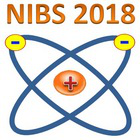Speaker
Dr
Alexander Panasenkov
(NRC "Kurchatov Institute")
Description
Reference design of the Residual Ion Dump (RID) for the ITER NBI system is based on an electrostatic deflection of the residual negative and positive ions to in-line dump panels. According to 4-channels beam line concept, RID forms four narrow (about 100 mm in width) vertical channels with the aid of 5 panels (1.8 m long and 1.7 m in height). Two middle panels are negatively biased with about 20 kV. This concept has the advantage of compact design with quite moderate power density (PD) load onto the panels – peak PD is less 8 MW/m2.
However, such a concept has never been earlier tested in any operating NBI system, all of them used magnetic deflection systems with remote ion dumps.
This report describes experimental investigation of the electrostatic RID concept which was carried out at the test stand IREK at the Kurchatov Institute.
The main physical questions were:
- Effect of the ion beam space charge on the RID deflection properties.
- Secondary electrons production and their behaviour in the crossed electric and magnetic fields, which can have an influence on the high voltage holding and state of operability.
Tested RID was designed with following conditions:
- Mono-atomic and mono-energetic positive helium ion beam with energy up to 50 keV instead of hydrogen beam with complex composition.
- One RID channel consisting of two panels 1x1 m and 150 mm in width, one panel is under negative potential up to 12 kV.
- Special magnetic system (MS) which produces rather uniform vertical magnetic field in the RID volume to simulate the ITER NBL conditions. Moreover, the MS was designed to produce Bz up to 130 Gs to compare electrostatic and magnetic deflection.
Experimental results showed that:
- The space charge of the beam with current at a level of 4÷5 A influences significantly on the required deflecting voltage – it was necessary to increase it about twice in compare with calculated without space charge.
- Secondary plasma gives also noticeable effect on the increase of the deflecting voltage.
- Drift of secondary electrons in crossed ExB fields does not influence noticeably on the high voltage holding.
The modeling program was developed which described the electric field distribution in the RID volume with account of the beam space charge and calculated trajectories of the deflected ions. The results of calculations were in good agreement with the experimental one. So, this program was used for calculation of the mixed beam of positive and negative deuterium ions (about 2 A each per one channel) deflection in the ITER RID. It was shown that 1 MeV ion current densities are small enough and moreover at the initial part of the RID channel positive and negative beams compensate space charge of each other. So, deflecting voltage of 20÷25 V will be enough for stable RID operation.
Primary author
Dr
Alexander Panasenkov
(NRC "Kurchatov Institute")
Co-author
Mrs
Eugenia Dlougach
(NRC "Kurchatov Institute")

